PART I: Summary
Psychedelics and Consciousness: A Journey Through Science
📖 What’s This Paper About?
This paper explores the “psychedelic renaissance” in the United States, analyzing how sociocultural factors influence the resurgence of interest in substances like LSD and psilocybin. The author examines how modern American social challenges—identity crisis, racial tensions, gender divisions, and diminishing trust in government—parallel the conditions that fueled psychedelic movements in the 1960s.
Why This Matters
The psychedelic renaissance represents more than just scientific interest in these substances—it reflects deeper cultural shifts and societal needs. As trust in institutions falters and ecological disasters loom, psychedelics are becoming integrated into mainstream culture, suggesting a collective search for connection and meaning in challenging times.
- Psychedelics are moving from counterculture to popular culture through films, TV series, and festivals
- The “Set and Setting” theory emphasizes how cultural context shapes psychedelic experiences
- Decriminalization efforts are gaining ground as therapeutic applications expand
Top 5 Takeaways
1. The Return of Psychedelics Mirrors Social Conditions
Today’s psychedelic renaissance echoes the 1960s, emerging from similar conditions of social unrest, identity crisis, and diminishing trust in institutions. Both eras saw psychedelics gain popularity during times when many Americans felt society was moving in the “wrong direction.”
Keep Up with Uncensored Psychedelic Trends
Join our newsletter at Psychedelics Uncensored.
We respect and protect your privacy. By subscribing your info will be subject to our privacy policy . Unsubscribe easily at any time
2. Cultural Context Shapes Drug Experience
The “Set and Setting” theory emphasizes that psychedelic experiences aren’t just about pharmacology but are profoundly shaped by sociocultural factors. The collective mindset and environmental context of America today influences how these substances are experienced, perceived, and integrated into society.
3. Mainstream Media Normalizes Psychedelics
Works like “The Matrix,” “Sense8,” and “Star Trek: Discovery” have incorporated psychedelic concepts into mainstream entertainment, normalizing ideas about consciousness expansion and interconnectedness. These productions introduce psychedelic concepts to audiences who might never try the substances themselves.
4. New Demographics Embrace Psychedelics
Unlike the 1960s when hippies defined psychedelic culture, today’s users include Silicon Valley entrepreneurs, Wall Street traders, wellness communities, and hip-hop culture representatives. This demographic expansion reflects psychedelics’ movement from counterculture to mainstream acceptance.
5. Legal Progress Is Accelerating
Progress toward decriminalization is gaining momentum, with cities like Denver, Washington D.C., and Cambridge already decriminalizing psilocybin. Oregon became the first state to legalize therapeutic use of psychedelic mushrooms statewide, marking a significant shift in drug policy.
The Bigger Picture
The psychedelic renaissance isn’t merely about drug legalization—it’s a response to profound social disconnection. In a fractured society struggling with racial tensions, environmental disaster, and a pandemic that further eroded trust in institutions, psychedelics offer a vision of interconnectedness. The mycelial metaphors in popular culture (seen in shows like “Star Trek: Discovery”) reflect a collective yearning for the kind of connection that seems increasingly elusive in modern America.
Final Thought
As psychedelics transition from counterculture to mainstream culture, they carry with them not just the potential for individual healing but a vision of collective reconciliation—a response to the very social fragmentation that helped fuel their resurgence.
Keep Up with Psychedelic Trends
Get uncensored psychedelic news, events, and updates. Join Psychedelics Uncensored!
We respect and protect your privacy. By subscribing your info will be subject to our privacy policy . Unsubscribe easily at any time
PART II: Complete English Translation
Full Academic Paper Translated from Russian
THE PHENOMENON OF THE ‘PSYCHEDELIC RENAISSANCE’ IN THE PRESENT-DAY USA
The article is devoted to the analysis of the pharmacological theory of the “Set and Setting” in the American socio-cultural context of the XXI century and focuses on the main collective factors that influence the emergence and rise of the third wave of popularity of illicit substances in American society, such as identity crisis, racial and gender split, social contradictions, as well as the loss of confidence of US citizens in government against the backdrop of the COVID-19 pandemic and environmental disaster. Employing a comparative method to juxtapose the “psychedelic renaissance” of the 2010s with the “psychedelic heyday” of the 1960s, using journalistic articles, psychedelic film texts and the descriptions of music festivals as sources, the author examines the influence of the domestic political situation in the United States: 1) on the popularization of LSD, psilocybin and other psychedelic substances; 2) on the promotion of psychedelic trends in modern US popular culture, namely, in cinema and festival activities; 3) on the effectiveness of contemporary psychedelic research.
Keywords: psychedelic renaissance in the US, LSD, psilocybin, American popular culture, counterculture in the US
Introduction
To what extent are the effects of psychoactive substances a construction created by society and culture? How does a different cultural and social set of patterns influence the experience of psychedelic experience, and most importantly, the image of the substance itself in society?
Currently, the problem of decriminalization, legalization, and recreational use of drugs is coming to the fore. The marginalization of banned substances after the start of the anti-drug campaign of the 1970s led to an almost complete abandonment of research on psychedelics. Therefore, works of the 20th century provide a rather vague answer to the question of what affects the psychedelic experience.
The main concept on which researchers of psychedelics who advocate for the legalization of this type of substance for recreational purposes rely is the concept of “Set and Setting” (attitudes and environment). The author of the classical theory is considered to be Timothy Leary, the father of psychedelic culture and the creator of the Harvard project. However, it was known even before the publication of “The Psychedelic Experience” [Leary et al. 2003] that appropriate preparation (positive thinking, working through fears, preliminary reading of literature), as well as the environment, influence a psychedelic session. Examples include studies of shamanic rituals, notes about the Parisian Club of Hashishins, and Hyde’s extensive work on an American psychiatric hospital in the 1950s [Hyde 1960].
In the classical theory of attitudes and environment, great importance was attached to personal factors (psychological state of the patient [Baudelaire 1998, p. 94], fears, desires [Metzner, Leary 1967], age [Hyde 1960], level of education, voluntariness), collective factors (physical and emotional environment, the relationship between the patient and the researcher) [Dimascio, Klerman 1960], as well as the sociocultural context (for example, the level of deviance and pathologization of drugs in society).
Modern researchers focus on the pharmacological aspect and advocate for the decriminalization of psychedelic drugs for recreational purposes and for the treatment of mental illnesses. However, they do not take into account the socio-cultural component of the psychedelic movement.
Therefore, the author of this article sees her task in tracing the influence of the socio-cultural agenda of modern USA on the “psychedelic renaissance” – the third wave of popularity of this type of narcotic substances. To achieve this goal, global challenges for American society were considered, a parallel was drawn with the “psychedelic heyday” of the 1960s, and the “environment” theory was confirmed with examples from popular culture.
Since personality is largely formed by external social and cultural forces, the success and safety of a psychedelic session, in the author’s opinion, depends more on the collective component. What happened in the Harvard project at the beginning of the 1960s would not have happened a decade earlier, possibly because the political and socio-cultural environment of the 1950s would not have allowed it. In the era of McCarthyism and the predominance of a conservative mentality, LSD was in the hands of the CIA, and the young generation of the 1960s turned it into a countercultural symbol. Changes that occurred in the social environment – the sexual revolution, the fourth great spiritual awakening, and radical youth movements – allowed LSD to become popular [Hartogsohn 2015].
The Age of Disappointment
American sociologist and political scientist Samuel Huntington noted in 1981 that the United States experiences periods of moral upheaval every sixty years, and the next activation of tension in society would occur approximately in the second or third decade of the 21st century [Huntington 1983, p. 38]. However, the tendency of a crisis of trust in government, the growth of social and racial tensions, and depersonalization emerged in the mid-2010s. Americans, as before, are no longer united by a creed, a system of values, faith in national institutions. Politician and publicist Patrick Buchanan, speaking about the USA at the beginning of the 21st century, calls modern culture anti-Christian, “because the values it glorifies are the antithesis of ancient Christian teaching” [Buchanan 2003, p. 8].
The disappointment of Americans in heroes and national history is confirmed by numerous acts of vandalism and the demolition of monuments to Confederates. This trend has sparked many debates in American society. Some believe that these monuments glorify people who tried to secede from the United States and lost the Civil War, and are also a painful reminder of institutionalized racism in the United States. Others hold the opinion that monuments represent the history of the country in its diversity and ambiguity. To remove them would be to censor, whitewash, and consign this history to oblivion.
The extreme left are convinced: Americans should despise and be ashamed of the history that made us the greatest country in the world. <…> America’s oldest monument – to Columbus, in Baltimore, was vandalized. And Senator Tim Kaine of Virginia demanded that the statue of American General Robert E. Lee be removed from the Capitol and replaced with a statue of Pocahontas.
According to Ellis Cose, a senior fellow at the American Civil Liberties Union, the demolition of monuments demonstrates how acutely racial injustice is felt and “the ugly legacy of American society,” and these actions will not lead to the eradication of racial tensions in the United States. In turn, Jeff Palmer, the first black professor in Scotland, emphasizes: “We don’t want the demolition of monuments, as people in 50 years will say: you know, they destroyed statues, but why didn’t they do anything about racism?”
The personality of young Americans is also influenced by the gender split, which consists of both different political views among men and women, and the general feminization of society [Pinker 2011, p. 84-85], economic inequality, manifested in the growth of income of the wealthy population and a decrease in the share of the middle class, as well as a sense of social tension. For example, racially motivated killings have shown that no one – neither black Americans nor whites – feels safe. Black Lives Matter protests were supported by US citizens regardless of their racial affiliation. Journalist David Brooks of The Atlantic suggested that young white people participated in the protests not so much in solidarity with African Americans as out of concern for their own safety, standing up against authorities that cannot be trusted.
The COVID-19 pandemic accelerated the development of a crisis of trust in government, facilitated by Donald Trump. He proved unable to lead the country during the pandemic, undermining the public’s belief in the government’s ability to protect the population and resorting to outright lies. And news that the Centers for Disease Control and Prevention was not providing up-to-date data on the virus and deaths further aggravated the situation. Trump’s posts on the social network Twitter, where he called global warming “mythical” and activists “alarmists,” were also sharply criticized. And his decision to withdraw from the Paris Agreement became the object of criticism from environmentalists, business leaders, and scientists.
According to experts, withdrawing from the agreement would hardly have changed the amount of greenhouse gas emissions, since they are not related to international legal obligations. Nevertheless, as sociological polls show, a large part of the US population, the overwhelming majority of Democrats and some Republicans were convinced that withdrawing from the agreement is a serious threat to American environmental policy.
If we compare the current state of American society with the period of turmoil in the 1960s, we can see similarities: the identity crisis in American society was reflected in mass protests, and the actions of the authorities led to a crisis of trust in state institutions. It seems to many Americans that society is again moving in the “wrong direction,” and a person is in a state of passive observer and does not see the strength in himself to change something. Due to depersonalization, he does not understand who he is, where he is going, what to believe in, and whom to trust.
The experience of the 1960s shows that people who used psychedelics were looking not only for new knowledge but also for collective consolidation. Thus, the “universal love” of the hippies can be explained both by the worldview of young people and one of the consequences of the action of psychedelics. LSD contributes to the emergence of the so-called “collective mind” or “collective unconscious,” following the terminology of psychologist Stanislav Grof [Grof 2019]. That is why travelers never went through psychedelic sessions alone, only in groups or with a guide, which was the social component of a favorable “environment.”
The tendency to escape from reality with the help of psychedelic substances also persists. Rebecca Renner, an expert from National Geographic magazine, writes about the trend of “apocalyptic” journeys during the COVID-19 pandemic. In parallel, “messianic” journeys arose: experiences in which a person immersed himself so deeply that he could see his personal saving role in implementing systemic changes, such as solving environmental problems. For example, techno-ecologist Richard Doyle suggested bringing pro-ecological hints into psychedelic sessions. His idea was to strengthen the connection with nature, as well as to draw attention to the problem of climate change.
With the development of technology, people have more opportunities to experience the LSD experience without the use of banned substances. In the 1960s, it was almost impossible to recreate the psychedelic experience on screen due to the underdevelopment of the special effects industry. Therefore, films like “The Trip” and “Acid Eaters,” although they were a breakthrough for the viewer of that time, will not impress anyone now. In the modern world, with the help of 3D graphics, you can create any picture, and the development of the VR industry allows a person to transfer to other worlds in seconds.
The use of the latest technologies to experience “acid experience without LSD” and to enhance the classical LSD experience is encouraged in every possible way. In the modern world, “fashion for LSD” is promoted by famous people from the entertainment industry, the high-tech sector, and the field of art. For example, representatives of Silicon Valley, including Steve Jobs and Bill Gates, use microdoses of LSD and psilocybin mushrooms to be more collected and productive, and the psychedelic artist and former employee of the company “George Lucas Industrial Light & Magic and Nintendo” Andrew “Android” Jones takes LSD for inspiration.
Indeed, if in the 20th century psychedelics were used by representatives of countercultural movements – hippies and ravers, now banned substances are used by other groups of the population – wellness communities, representatives of hip-hop culture, the political right, cryptocurrency enthusiasts, Wall Street traders, financiers, and ordinary people seeking to improve their mental health.
The “Third Youth” of Psychedelics
Thanks to the crisis in many spheres of public life in the United States, psychedelic culture received another push, which elevated it to the rank of popular culture.
As an example of the popularization of the psychedelic movement, one can turn to the work of Lilly and Lana Wachowski. The Wachowski family made the films “The Matrix” and “V for Vendetta,” which popularized such elements of psychedelic culture as the connection of people with each other and with the surrounding world, the introduction of heroes into a state in which the line between reality and fiction is blurred.
In the podcast “The Many Meanings of the Matrix,” Ken Wilber, an American psychologist and philosopher, commented on all three films from the point of view of his research – integral theory and the theory of perinatal matrices of Stanislav Grof. Wilber came to the conclusion that, in essence, people and artificial intelligence are part of a single cosmic consciousness. And this is the basis of the entire Matrix trilogy, since Neo and Agent Smith represent opposites in universal polarity.
In more detail, in this article, it makes sense to analyze another work of the Wachowski sisters – the series “Sense8,” which was broadcast on the Netflix platform from 2015 to 2018. The series tells about a separate evolutionary line of people – Homo sensorium, which developed in parallel with Homo sapiens over the past hundreds of thousands of years. Homo sensorium differs from Homo sapiens in that they are telepathically connected with each other. Eight people share feelings, thoughts, and talents with each other. Members of the species Homo sensorium are empathically connected through a psychic substrate called psycellium. The Wachowskis claim that the mycelium of mushrooms was the perfect metaphor for conveying this psychological network. The term is a combination of the words psilocybin, psychic, and mycelium. The series also has another reference to psychedelics. In the first episode of the series, a woman smokes DMT, a tryptamine molecule very similar to psilocybin, and awakens her connection to the psyllium network, joining the consciousness of another person.
The series touches on several rather important topics, in particular the difference between autonomy (individuality), communication, and transcendence, that is, going beyond one’s consciousness, expanding it. Each person in the group is, first of all, a separate personality with their own consciousness. They live in different countries, being carriers of a certain culture and mentality. However, they are irresistibly attracted to each other, which leads to the commonality/collectivity of consciousness. The heroes of the series strive beyond their individuality. There are moments when the cluster functions as a single organism, and people act synchronously. They not only think as a whole but also share their pain and motivation. The theme of transcendence is reflected in the series as the absence of separation between people, cultures, as well as genders and gender identities, which is very important both for the Wachowski sisters and for the modern audience. Critics of the Rotten Tomatoes website, which collects reviews of films and series from various publications, noted the disclosure of the themes of “comprehensive connection” between people and “post-racial globalism.”
Another way to integrate mycelial connections between people into popular culture is the new series “Star Trek: Discovery” by director Brian Fuller, first shown in 2017. For decades, “Star Trek” has been one of the most popular series in Western pop culture in the science fiction genre, presenting possible scenarios for the future by integrating the latest scientific knowledge and technologies. This time in Discovery, it is mycelium that sets the semantic context. An interesting reference is that the main character Paul Stamets is named after a real scientist who researched psychedelic mushrooms. In the series, people discovered that all places in the Universe and all parallel universes are connected by mycelial webs. Therefore, the Universe is fundamentally alive. By traveling through the mycelial web, the ship can travel a light year in 1.3 seconds and even enter alternative universes.
The visionary orientation and the possibility of experiencing “acid experience without LSD” while watching the series sparked wide discussions on the Reddit website, and some users expressed a desire to combine this type of psychedelic experience with the real one, using LSD.
The work of mycologist Paul Stamets also influenced another cultural masterpiece, “Avatar,” which for ten years remained the highest-grossing film in international distribution. Louis Schwartzberg, producer and director of the film “Fantastic Fungi,” writes:
The concept of the Mother Tree, first proposed by Paul Stamets and Suzanne Simard, became fundamental to the concept used by director James Cameron in “Avatar.” Without this spiritual core, “Avatar” would never have become one of the highest-grossing films of all time [Schwartzberg, Stamets 2019, p. 175].
The most important part of psychedelic culture, significant for my research, is psychedelic festivals, such as, for example, “Burning Man” and “Lightning in a Bottle.” For many, these festivals are rituals that require preparation.
In 2015, a group of scientists led by Oxford neuropsychologist Molly Crockett joined forces with the administration of the city of Black Rock, where “Burning Man” takes place, to study what was happening at the festival. This work was published on the BRC Census website. Based on the analysis of the data obtained, we can conclude that the crazy popularity of the festival is due to a cohesive community of creative personalities. “Burning Man” is attended by people of different ages, different incomes, different ethnicities, but all of them are united by a love of art, music, and adventure. 75% of participants reported that they had a psychedelic experience at the festival (both with LSD and without it), while 85% claimed that what they saw remained in their minds for several weeks or months. This is an incredibly high average.
According to Deirdre Ruane, a journalist for Dancecult magazine, “Burning Man” is a celebration of self-confidence and self-expression [Ruane 2015]. The audience mainly consists of creative people – scientists working on artificial intelligence, engineers, artists, programmers, psychedelic researchers, and the prosperity of this community is associated with the creative potential of participation.
Conclusion
Studying the influence of non-drug factors on the action of drugs, both in medicine and beyond, can make a significant contribution to understanding the action of drugs in the real world. The popularization of the psychedelic movement through films and festivals, although not the main way to achieve the goal – the legalization of the use of psychedelics for recreational purposes throughout the United States, helps to prevent the social harm of drugs or minimize it by creating positive moods and conditions for the experience.
The efforts of psychedelic activists in this direction are already bearing fruit. So, in May 2019, psilocybin was decriminalized in Denver, in 2020 – in the cities of Washington, Somerville, and Cambridge. Oregon has become the first state in whose entire territory the therapeutic use of psychedelic mushrooms is no longer considered a crime.
References
Buchanan, P. (2003), The Death of the West, AST, Moscow, Russia.
Leary, T., Metzner, R, and Alpert, R. (1962), Psychedelic experience, Initsiaiva, Nika-Tsentr, Kiev, Lviv.
Baudelaire, C. (1998), Artificial Paradises: Baudelaire’s Masterpiece on Hashish, Kindle Edition, Citadel Press, Secaucus, NJ, USA.
Dimascio, A. and Klerman, G. (1960), “Experimental human psychopharmacology: The role of non-drug factors”, The Dynamics of Psychiatric Drug Therapy, Sarwer-Foner, G.J. (ed.), C.C. Thomas, Springfield, IL, pp. 56–97.
Grof, S. (2019), The way of the psychonaut, Vol. 1, 2: Encyclopedia for inner journeys, Multidisciplinary Association for Psychedelic Studies, Santa Cruz, CA., USA.
Hartogsohn, I. (2015), The psycho-social construction of LSD: How set and setting shaped the American psychedelic experience 1950–1970, Ph.D. Thesis, Bar Ilan University, Ramat Gan, Israel.
Huntington, S. (1983), American Politics: The Promise of Disharmony, Belknap Press: An Imprint of Harvard University Press, Cambridge, MA.
Hyde, R. (1960), “Psychological and social determinants of drug action”, The Dynamics of Psychiatric Drug Therapy, Sarwer-Foner, G.J. (ed.), C.C. Thomas, Springfield, IL, USA, pp. 297–315.
Metzner, R. and Leary, T. (1967), “On programming psychedelic experiences”, Psychedelic Review, no. 9, pp. 5–19.
Pinker, S. (2011), The Better Angels of our Nature, Viking, N.Y., USA.
Ruane, D. (2015), “Harm reduction or psychedelic support? Caring for drug-related crises at transformational festivals”, Dancecult: Journal of Electronic Dance Music Culture, vol. 7, no. 1, pp. 55–75.
Schwartzberg, L. and Stamets, P. (2019), Fantastic fungi: How mushrooms can heal, shift consciousness & save the planet, Earth Aware, San Rafael, CA.
This is informational, not medical advice.
Read the Original Russian Version
This translation is based on the original Russian academic paper. Access the source document to see the scholarly work in its native language.
Sources

1. Buchanan, P. (2003), The Death of the West, AST, Moscow, Russia.
2. Leary, T., Metzner, R, and Alpert, R. (1962), Psychedelic experience, Initsiaiva, Nika-Tsentr, Kiev, Lviv.
3. Baudelaire, C. (1998), Artificial Paradises: Baudelaire's Masterpiece on Hashish, Kindle Edition, Citadel Press, Secaucus, NJ, USA.
4. Dimascio, A. and Klerman, G. (1960), "Experimental human psychopharmacology: The role of non-drug factors", The Dynamics of Psychiatric Drug Therapy, Sarwer-Foner, G.J. (ed.), C.C. Thomas, Springfield, IL, pp. 56–97.
5. Grof, S. (2019), The way of the psychonaut, Vol. 1, 2: Encyclopedia for inner journeys, Multidisciplinary Association for Psychedelic Studies, Santa Cruz, CA., USA.
6. Hartogsohn, I. (2015), The psycho-social construction of LSD: How set and setting shaped the American psychedelic experience 1950–1970, Ph.D. Thesis, Bar Ilan University, Ramat Gan, Israel.
7. Huntington, S. (1983), American Politics: The Promise of Disharmony, Belknap Press: An Imprint of Harvard University Press, Cambridge, MA.
8. Hyde, R. (1960), "Psychological and social determinants of drug action", The Dynamics of Psychiatric Drug Therapy, Sarwer-Foner, G.J. (ed.), C.C. Thomas, Springfield, IL, USA, pp. 297–315.
9. Metzner, R. and Leary, T. (1967), "On programming psychedelic experiences", Psychedelic Review, no. 9, pp. 5–19.
10. Pinker, S. (2011), The Better Angels of our Nature, Viking, N.Y., USA.
11. Ruane, D. (2015), "Harm reduction or psychedelic support? Caring for drug-related crises at transformational festivals", Dancecult: Journal of Electronic Dance Music Culture, vol. 7, no. 1, pp. 55–75.
12. Schwartzberg, L. and Stamets, P. (2019), Fantastic fungi: How mushrooms can heal, shift consciousness & save the planet, Earth Aware, San Rafael, CA.





 Anne Hixon
Anne Hixon David Connell
David Connell Imogen Sharma
Imogen Sharma
 Lisa A. Koosis
Lisa A. Koosis
 Alana Luna
Alana Luna
 Brindusa Vanta, MD, DHMHS
Brindusa Vanta, MD, DHMHS
